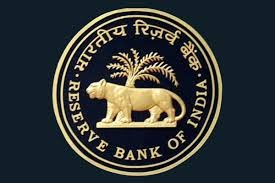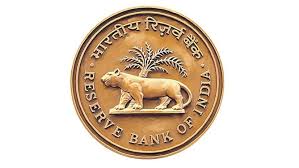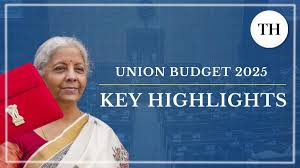RBI Forms Panel to Review Fee Structure for White Label ATMs
Introduction to the RBI Panel Formation
The Reserve Bank of India (RBI) has recently established a committee to evaluate the current fee structure for White Label ATMs (WLAs). This strategic move aims to address various concerns regarding the operational costs and service quality of these ATMs, which are not affiliated with any particular bank. The committee’s primary objective is to ensure a balanced and fair fee structure that benefits both the operators and the users.
Objectives of the Committee
The newly formed committee will conduct a thorough review of the existing fee structure for WLAs. These ATMs, which are managed by non-bank entities, have seen a rise in usage over the years. However, there have been growing concerns about the fees charged to customers and the financial viability for operators. The committee’s role will include analyzing current fee models, understanding the financial pressures on operators, and recommending adjustments that could enhance the overall ATM service ecosystem.
Impact on ATM Operators and Customers
One of the significant aspects the committee will focus on is how changes in the fee structure could impact both operators and customers. For operators, an equitable fee structure could improve profitability and service quality. For customers, it could lead to more transparent and possibly reduced transaction fees. The committee’s recommendations will be crucial in shaping the future of WLA operations and customer experiences.
Expected Outcomes
The RBI anticipates that the committee’s review will lead to a more sustainable and user-friendly ATM service model. By addressing existing issues and implementing recommended changes, the RBI hopes to ensure that WLAs remain a viable and efficient alternative to bank-operated ATMs. The outcome of this review is expected to influence future regulatory policies related to ATM services.

Why This News is Important
Regulation of ATM Fees
The formation of a committee by the RBI to review the fee structure for White Label ATMs (WLAs) is a significant regulatory step. It reflects the RBI’s commitment to ensuring that ATM services are accessible and affordable for all users. By reassessing the fee structure, the RBI aims to address concerns regarding high transaction fees and operational costs, which can affect both consumers and ATM operators.
Enhancing Service Quality
The review is expected to enhance the quality of service provided by WLAs. With a fair fee structure, operators may have more incentives to maintain and upgrade their machines, ensuring better service and reliability. This move could lead to improved customer satisfaction and a more competitive ATM service market.
Impact on Financial Inclusion
White Label ATMs play a crucial role in financial inclusion, especially in areas underserved by traditional bank branches. A fair fee structure can ensure that these ATMs remain operational and accessible, supporting the RBI’s broader goals of promoting financial inclusion and equitable access to banking services across India.
Regulatory Insight
The committee’s recommendations will provide valuable insights into the operational challenges faced by WLA operators and the effectiveness of current regulations. This information will be crucial for the RBI in shaping future policies and ensuring a balanced regulatory environment that supports both innovation and customer welfare.
Future Implications
The outcome of the committee’s review could have far-reaching implications for the ATM industry and financial services sector. It could set a precedent for how fees are regulated in other financial services and impact the overall landscape of banking operations in India.
Historical Context
Evolution of White Label ATMs
White Label ATMs were introduced in India in 2012 to increase access to banking services in regions with limited ATM infrastructure. Unlike traditional ATMs operated by banks, WLAs are managed by non-bank entities. The goal was to expand ATM networks and improve financial inclusion, particularly in rural and semi-urban areas.
Regulatory Changes Over Time
Since their inception, WLAs have been subject to various regulatory frameworks designed to ensure fair access and service quality. The RBI has periodically reviewed and adjusted regulations to address emerging challenges and opportunities within the ATM sector. This latest initiative to review the fee structure reflects ongoing efforts to adapt to evolving market conditions and technological advancements.
Previous Reviews and Reforms
Prior to this, the RBI has undertaken several reviews and reforms concerning ATM operations, including fee structures and service standards. These efforts have aimed at balancing the interests of consumers, operators, and banks while fostering a competitive and efficient ATM network.
Key Takeaways from RBI Forms Panel to Review Fee Structure for White Label ATMs
| Serial Number | Key Takeaway |
|---|---|
| 1 | The RBI has established a committee to review the fee structure for White Label ATMs (WLAs). |
| 2 | The committee’s review aims to address concerns related to operational costs and service quality. |
| 3 | Changes in the fee structure could impact both ATM operators’ profitability and customers’ transaction fees. |
| 4 | The review is expected to enhance service quality and support financial inclusion by ensuring accessible ATM services. |
| 5 | The outcome of the review will influence future regulatory policies and potentially set new industry standards. |
Important FAQs for Students from this News
1. What is the primary objective of the RBI’s newly formed committee?
The primary objective of the RBI’s committee is to review and assess the current fee structure for White Label ATMs (WLAs). This aims to address concerns related to operational costs, service quality, and the overall fairness of the fee structure for both operators and customers.
2. What are White Label ATMs?
White Label ATMs are ATMs operated by non-bank entities. Unlike traditional ATMs managed by banks, WLAs are set up and operated by independent organizations, aiming to increase the availability of ATM services in underserved regions.
3. How could changes in the fee structure impact ATM operators and customers?
Adjustments in the fee structure could improve profitability for ATM operators and potentially reduce transaction fees for customers. This may lead to enhanced service quality and greater transparency in ATM operations.
4. Why is the review of the fee structure significant for financial inclusion?
The review is significant because White Label ATMs play a crucial role in increasing access to banking services in areas with limited traditional banking infrastructure. A fair fee structure ensures these ATMs remain operational and accessible, supporting broader financial inclusion goals.
5. What historical context is relevant to the RBI’s committee review?
The RBI has previously reviewed and adjusted regulations related to ATM operations, including fee structures and service standards. The introduction of White Label ATMs in 2012 aimed to expand access to financial services, and this latest review reflects ongoing efforts to adapt to market changes and ensure effective regulation.
Some Important Current Affairs Links


















